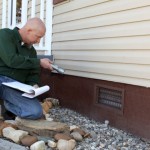For most first-time homebuyers, securing a down payment is the biggest hurdle.
There comes a point for many first-time homebuyers when nearly everything you do becomes focused on saving for that purchase. Even when you’ve been putting money away regularly for years, you find yourself willing to cut out that beach vacation you had been planning, eating in more and even considering a part-time job to help close the gap between you and homeownership.
But even when you’re levelheaded about what you can afford and will qualify for in terms of monthly mortgage payments, the down payment remains a hurdle most first-time buyers struggle with.
As housing inventories remain low in major markets across the U.S. and home prices continue to rise, the difficulty of saving enough money for a down payment only grows.
A Zillow report released in November found homebuyers have to continuously save more for a down payment to keep up with the rising price of property throughout the U.S. The median home price is expected to be $6,275 more in a year, the report says, which means buyers will need to save an additional $105 per month simply to make up for the difference in a 20 percent down payment between now and then.
For first-time homebuyers trying to save for a down payment, the prospect of having to sacrifice more to get there or lower their expectations can be disheartening. Online real estate brokerage Open Listings published a homebuying survey of 500 millennials this week that examines affordability obstacles and where young homebuyers are trying to save to move toward homeownership. Thirty percent of respondents said they wouldn’t be ready to own a home for more than five years, and just 44 percent already own property.
“Without any changes to the market, or some special things happening to the homebuyer, sacrifices are necessary in order to actually make it a reality,” says Judd Schoenholtz, co-founder and CEO of Open Listings, which represents buyers in transactions based on the West Coast.
You’re Not Doomed
There is, of course, some respite for first-time homebuyers when it comes to borrowing options, with the growth of low down payment mortgage programs. Mortgage options requiring less than 20 percent down – with loans through the Department of Veterans Affairs, the Federal Housing Administration, the Department of Agriculture or the purchase of private mortgage insurance – allow homebuyers to get financing with as little as 3 percent (or even zero percent) down.
These options are becoming an “underlying trend within the first-time homebuyer,” says Tian Liu, chief economist for Genworth Mortgage Insurance. Genworth recently released its third-quarter 2017 report, which notes 601,000 first-time buyers purchased single-family homes between July and September. Of those purchases, 467,000 of them were financed with low down payment mortgages, which is up 5 percent from the same time period a year ago.
The growth in low down payment programs is a turnaround from the recession, when lenders wouldn’t move on many deals without perfect credit and 20 percent down. But Liu says the need for a more attainable option has always been necessary to help first-time homebuyers get in the door, not just in the current climate of rising home values.
“It’s really a life cycle story, that you have very little saving to begin with, and as you get into the labor force you start to earn some money, and you earn more than you spend, and therefore you have savings as you go on,” Liu says. “For your first home, you will have very little in assets – typically our borrowers have very small amount of assets, liquid assets in particular – to afford a 20 percent down payment.”
With a 3 percent down payment for a $300,000 house or condo, you’ll need just $9,000 in cash instead of $60,000 required for the standard 20 percent down payment, which gets you much closer to obtaining your goal. The mortgage insurance required with most types of low down payment programs increase your monthly payment, but they still make saving up easier. However, a smart homebuyer will need to save even more to make up for potential increases in value as you move toward homeownership, as well as account for any type of emergencies you may have. The last thing you want is to move into a house with no money in the bank only to sustain roof damage in a storm three weeks later. ~Devon Thorsby







